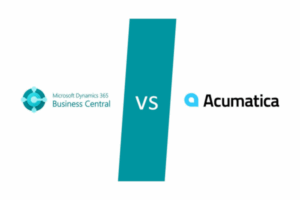Typical Timeline for Medical Device ERP Implementation
Most medical device ERP implementations take between 4 and 12 months.
The process typically includes the following phases:
- Discovery and Planning: Identify goals, gaps, and must-have features. (2–4 weeks)
- System Design and Configuration: Tailor the system to your specific workflows. (4–8 weeks)
- Data Migration and Validation: Clean and import historical data while ensuring integrity. (4–8 weeks)
- Training and Testing: Make sure your team is ready and workflows are validated. (4–6 weeks)
- Go-Live and Support: Launch the system with support from your partner. (2–4 weeks of stabilization)
Each phase can take more or less time depending on your resources, scope, and regulatory complexity.
Factors That Affect Medical Device ERP Implementation Time
Several key factors will influence your implementation timeline:
- Company Size and Complexity: Multi-site operations and complex manufacturing processes typically take longer.
- Regulatory Compliance: Systems supporting FDA 21 CFR Part 11, ISO 13485, and EU MDR need validation tools and workflows that take additional time to configure.
- Customization Requirements: Every custom report, workflow, or integration adds weeks.
- Deployment Type: Cloud-based ERP systems can be implemented faster than on-premise.
- Team Engagement: Delays often stem from internal teams not being able to prioritize the project.
- Data Quality: Clean, well-structured data migrates faster and with fewer errors.
Example Timelines Based on Company Size
- Small Manufacturers (<$10M revenue): 4–6 months — Standard functionality, minimal customization, and fewer users.
- Mid-Sized Manufacturers ($10M–$100M revenue): 6–9 months — More users, compliance steps, and process mapping.
- Large Manufacturers (>$100M revenue): 9–12+ months — Complex systems, multiple integrations, and in-depth validation.
These are general ranges. Your actual timeline may vary depending on your ERP provider, internal resources, and project goals.
How to Stay on Schedule During Implementation
While you can’t control every variable, you can reduce delays by:
- Choosing an ERP built for the medical device industry: These solutions reduce the need for custom work.
- Assigning internal champions: Get buy-in from each department to drive adoption.
- Keeping your scope focused: Avoid adding unnecessary features mid-project.
- Holding weekly check-ins: Regular communication keeps tasks moving and identifies blockers early.
- Validating early: Don’t wait until go-live to test compliance and traceability workflows.
These steps can help keep your medical device ERP implementation on track.
Post-Go-Live Considerations
After the system is live, there’s typically a 1–3 month stabilization period. During this time, your team will:
- Adjust to new workflows
- Fine-tune dashboards and reports
- Work through support tickets with your ERP partner
It’s also a good time to begin measuring KPIs like order accuracy, batch traceability, and audit readiness.
Signs Your Implementation Is on the Right Track
Not sure if you’re progressing well? Here are some good signs:
- Project milestones are being met
- Training is happening on schedule
- Compliance requirements are being validated in real time
- Leadership has visibility into implementation status
If you’re seeing these signals, you’re on a path to a successful medical device ERP implementation.
Final Thoughts
Medical device ERP implementation can feel overwhelming, but a structured timeline and the right partner make it manageable. Focus on compliance, choose a system tailored for your industry, and stay actively engaged throughout the process.
Alchemy 365 helps medical device manufacturers implement ERP faster—with built-in tools for regulatory workflows, traceability, and audit readiness, all on Microsoft Business Central.
📌 Related Reading:How Much Does Medical Device ERP Cost?





